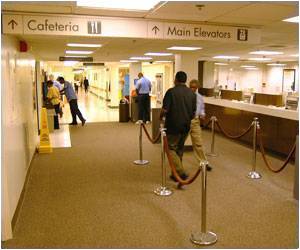A pressure ulcer is an area of skin that breaks down when constant pressure is placed against the skin. With appropriate treatment, the agony caused by pressure ulcer can be reduced.

Despite scientific advancement, the prevention and treatment of pressure ulcer remains a challenge.
A team of scientists has developed the best possible practice for preventing and treating pressure ulcers (PrU) by various guidelines.
The treatment consists of certain key steps such as treatment of the cause, addressing patient-centered concerns and administering local wound care.
Pressure Ulcer-Prevention
The patients with high risk for pressure ulcers need to be identified by reviewing their medical history and current medication profile, assessing the skin periodically and by using validated risk assessment tools like Braden scale, Waterlow scale and Norton scale.
Determine the Type of Wound:
• Healable wound: the cause is corrected, there is enough blood supply to heal; moist interactive healing
• Maintenance wound: the wound could heal, but the cause is not corrected due to patient unwillingness to adhere to treatment or a lack of required system resources
• Non-healable wound: the patient is ill or may have negative protein balance or inadequate blood supply that is not bypassable or dilatable
Certain other factors such as systemic disease, medications and nutrition also affect the process of wound healing.
Treat the Cause:
Pressure and Shear
The prevention of pressure ulcer is dependent on the reduction of forces of pressure and shear that are responsible for damaging the skin, muscles and subcutaneous fat. Pressure can be managed by using pressure management cushions and by encouraging the patients to reposition themselves when possible.
Nutrition
The nutritional assessment involves measuring hemoglobin, body mass index (BMI) and serum albumin level. BMI greater than 20 poses an increased risk of pressure ulcer. Low hemoglobin levels of 80-100 delays healing while very low levels of 60-80 severely impair the wound healing process. Normal albumin levels are above 30-33, with delayed healing at levels between 20 and 30, and at levels greater than 20 it will be very difficult to heal a wound.
Immobility, Level of Activity and Positioning
Individuals with spinal cord injuries are prone to develop pressure ulcers. Such patients should consult a professional and resort to exercise program (e.g., in bed, movements or positioning during seating, assisted ambulation, and training equipment).
Moisture and Friction
Both friction and moisture lead to superficial breaking of the skin. Care should be taken to keep the region dry and free of moisture. Underwear or diapers should be regularly changed in case of urine and fecal incontinence. Urinary incontinence may be controlled with intermittent catheterization, a condom catheter, or an indwelling catheter; however, their use is associated with other complications including infections.
Patient-centered Concerns:
Pain
Pressure ulcers are associated with pain. Nociceptive (gnawing ache, tender, and throbbing) stimulus dependant pain can be treated with acetylsalicylic acid and nonsteroidal anti-inflammatory drugs and then progressing to narcotic agents. While neuropathic (burning, stinging, shooting, and stabbing) non-stimulus dependent pain can be controlled using tricyclic compounds high in noradrenalin activity.
Odor
Odor from the wound dressing needs a treatment against the anaerobic bacteria.
Smoking
Smoking hampers the blood flow by 40 percent and causes ischemia and delays healing. Smoking one cigarette constricts the blood vessels for 90 minutes.
Bed rest
Bed rest leads to mental and physical degradation hence daily activities should be encouraged to promote normal and healthy life.
Other Factors Influencing the Treatment:
Type of Pressure Ulcers
Pressure ulcers are classified into categories based on their severity.
A suspected deep tissue injury (sDTI) is characterized by a purple or maroon localized area of intact skin that may feature a blood filled blister due to damage of the underlying soft tissue from pressure and/or shear. Not all sDTIs subsequently ulcerate or breakdown, as they can self resolve.
Location and Size
The healing of an ulcer depends largely on its size and location. The size is measured to assess the progress of the treatment.
Arterial Insufficiency
Insufficient blood supply in the lower limbs accounts for the heel ulcers.
Treatment:
Local Wound Care
The wound should be cleansed gently with low-toxicity solutions such as acetic acid (0.5 to 1.0 percent) or saline. If seepage of the solution is not visible, compresses on gauze ribbon can be used.
Debridement
Bacterial debris should be properly removed from the wound surface. Autolytic debridement is often facilitated with dressings (e.g., calcium alginates, hydrogels or hydrocolloids). Enzymatic (e.g., collagenase) or biological debridement with maggots may also be used.
Moisture Balance
Optimal moisture balance is needed for proper wound healing. Moisture balancing dressings in the form of films, hydrogels, hydrocolloids, foams can be used.
Infection
The wound should be protected from bacteria and other microbes. The presence of any three clinical signs in the mnemonic NERDS (non-healing, exudate increase, red friable or easily bleeding granulation tissue, new slough or debris on the wound surface, and smell) indicate severe bacterial colonization. These wounds can be treated with topical antimicrobials like silver dressings (combined with foams, alginates or hydrogels, as well as grid or cloth-like structures), PHMB foam and gauze, iodine (cadexomer iodine or povidone iodine), and honey (alginate, hydrogel or hydrocolloid).
Systemic antibiotics may be required to treat wounds with increased exudates and smell.
Inflammation
Care should be taken to avoid persistent inflammation as it can lead to delayed wound healing. Dressings containing silver, collagen, ibuprofen or oxidized regenerated cellulose can improve the condition.
Advanced Therapies
Electrical stimulation and therapeutic ultrasonography are the advanced therapies for the treatment of pressure ulcers. Wounds with cliff like edges indicate that the healing is stalled and in such cases, advanced therapies can be effective. For deep ulcers, surgery is also considered and negative pressure wound therapy is resorted to when excessive exudates are present.
Though not all ulcers are preventable, ulcers can be very effectively treated with the coordination of health care professionals, a proper treatment plan and by encouraging the patients to adhere to the treatment.
Source-Medindia









